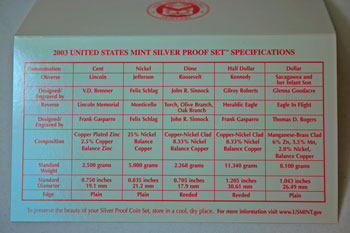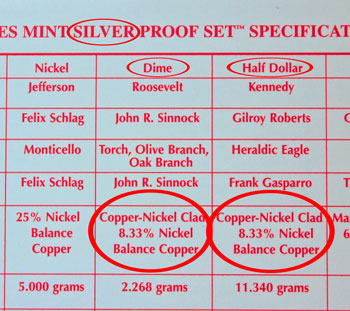First, do you know how to make a grown numismatist cry? Well, not really literally, but figuratively at least.
You’ve seen the metals markets’ activities over the last few weeks. For some proof sets, the price of the silver coins – dimes, quarters and halves – is higher as bullion rather than as part of a proof set. But, in order to sell the silver coins, they must be removed from the set. Heaven forbid, that means you have to touch proof coins!
For true numismatists, touching proof coins is very difficult – even though they are going to the bullion dealer as silver for melting.
The 2003 Proof Set just happens to be one of those sets that breaks to be worth more as individual coins rather than the set. In 2003, the Mint had a minor editing issue with their certificates. See if you can spot the problem in the certificate below.
First, the front of the certificate can be readily recognized:
Next, opening the certificate shows the message from the Mint and the description of the State Quarters included in the 2003 set:
Turning over the certificate shows more information about the rest of the coins in the set:
Have you spotted the issue yet? The small size of the pictures makes it difficult. Here’s a close-up:
Now, do you see the problem? For those who are new to numismatics, the next picture points out the issues:
In a silver proof set the metal composition of the dime, the quarter (either one or more) and the half will be 90% Silver and 10% Copper. Scrolling back up, the inside of the certificate shows the correct composition for the five quarters in 2003, but the certificate’s back mistakenly shows the clad composition for the dime and half.
The Mint, once they discovered the composition mistake, printed new certificates and sent them to the people to whom they had already mailed their proof sets.
Of course, numismatists with that collector gene made the error certificates a collectible as well. At one time, people paid money to obtain the error certificates. That time has passed. There may be a few collectors for the error certificates, but in general, the errors no longer command a value.
It’s interesting what you find when you go through quite a few proof sets.




